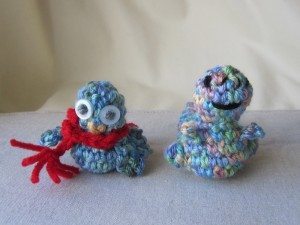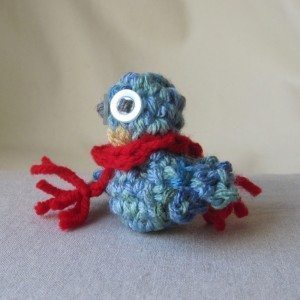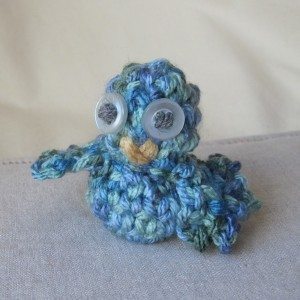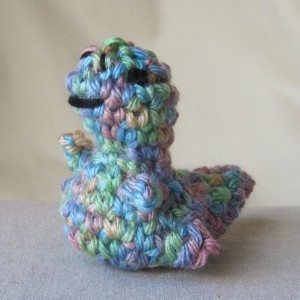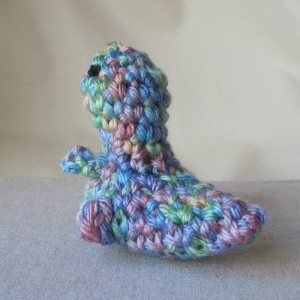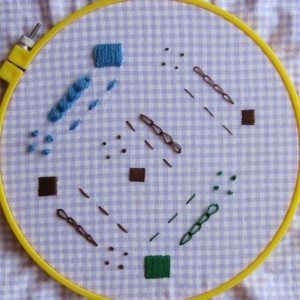The title is misleading – “how to teach embroidery” is more of a question than an answer. I’ve taught it multiple times at the Sew-Op and the students seem satisfied, so perhaps I’ve succeeded already, but it’s such an odd, free-form class that I can’t really tell.
I’ve got another session of embroidery class tonight, so I’ve been thinking about this question over the past couple of weeks. Should I make it a project class? In December I taught one aimed at making felt ornaments, with a variety of holiday and non-holiday patterns printed on tracing paper. No one used any; they were all interested in embroidery for their own purposes.
Still, it’s nice to have something to hang up in the store to entice people to sign up. That didn’t happen, but I do have a few of the new models I wanted. In the last five or six days I’ve remembered several I would have liked last time, but didn’t note down for myself in any place I’ve looked at since.
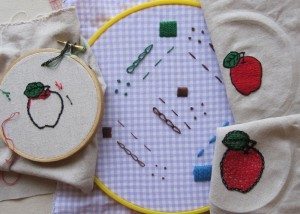
You’ll see these apples again.
I have learned some things in the few times I’ve taught embroidery. One was how to successfully make a French knot! No longer are they the bane of my cross-stitching experience. I’ve also had to learn to be flexible in how I describe stitches. I may do well describing the blanket stitch in terms of compass directions or the corners of a box, but that doesn’t mean everyone will. I even had one student who was the most kinesthetic learner I’ve ever met, and the only thing that worked was actually placing the needle for her and having her complete the motion, all the way through the stitch. After that she had it, but description and demonstration did not suffice.
I try to emphasize how much can be done with just a few stitches, bringing a pile of examples to class. The embroideries for my children’s book quilt are almost entirely straight and satin stitches, with a few backstitched or stem-stitched portions (none of which are vital to the look). I have an antique handkerchief done in satin and straight stitch, and a tea towel with lovely flowers and butterflies made from lazy daisy, blanket stitch, stem stitch, and French knot. The examples I hope to have before the next time are more thorough but also modular: different numbers of strands, perle cotton and other non-embroidery-floss materials, quilting cotton versus more coarsely-woven fabrics, stitching in different sizes and with different proportions. Ideally I’ll eventually have a personal stitch sampler with a page for each stitch and for different thread/fabric combinations that can have its pages taken out and passed around.
Since there are only so many stitches we can cover in two hours, I try to emphasize the motions that distinguish the categories of stitches and are common to multiple stitches. Are you overlapping? Catching a strand? Pointing your needle in the same direction as the stitch line is progressing, off by ninety degrees, or backwards? My handout covers lots of embroidery basics, tips, and advanced notes they may come back to later, as well as ten stitches with variations. We don’t come close to covering all of them, but having them in the handout allows me to tailor the class to the interests of the participants. We always start simply with running stitch and general thread management, but then: If they are interested in classic stitching like my tea towel, we’ll cover stem stitch, French knot, chain stitch, and blanket stitch, probably in that order. If they are interested in making pictures more like my children’s book embroideries, we’ll work on the various straight stitches and doodle in thread. If they want to put edgings on blankets and garments, we’ll cover whipstitch, blanket stitch, and cross-stitch, and I might ad lib herringbone stitch.
Doing is the most important part of any class in arts and crafts, though. Doing anything! If I can teach them the basic motions and how to think about embroidery stitches, it doesn’t much matter which particular stitches we cover because they’ll be equipped to learn others on their own.
Maybe I had more answers than I thought…
